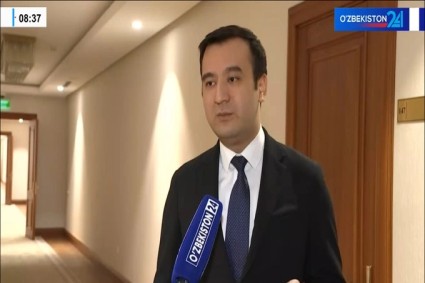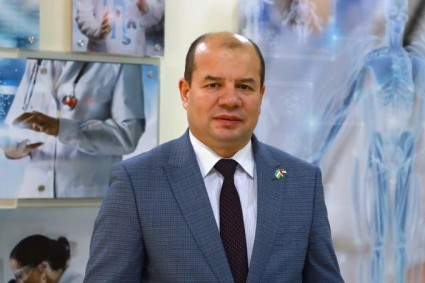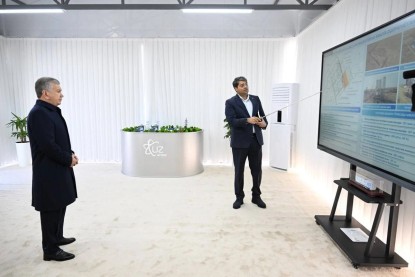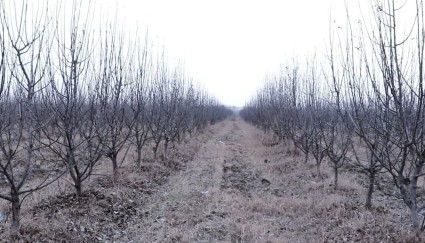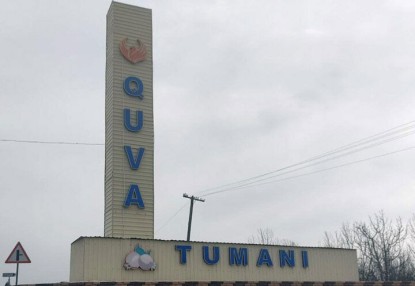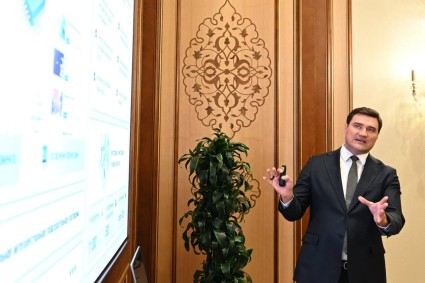The delegations of the three parties to the Ustyurt Memorandum — Uzbekistan, Kazakhstan, and Turkmenistan — signed a roadmap to enhance nature conservation on the Ustyurt Plateau. The Michael Succow Foundation (charity foundation for nature conservation) and the Secretariat of the Bonn Convention on the Conservation of Migratory Species of Animals provided assistance in developing the document.
The roadmap is designed to unite the efforts of the countries of the region and international partners in protecting biodiversity. The preservation of the ecosystem is also threatened by planned energy and infrastructure projects, noted ecologist Rustam Murzakhanov, a representative of the Succow Foundation.
The roadmap was developed for 2025-2030 and includes seven key areas of work:
- Transboundary conservation of wild animals and their habitats.
- Improving the monitoring of transboundary populations of rare species.
- Raising awareness of the importance of the Ustyurt Plateau for preserving biodiversity.
- Fight against poaching.
- Developing ecotourism and reducing the impact of economic development on biodiversity.
- Joint actions for reintroduction of cheetah.
- Boosting international conservation partnerships.
Representatives of environmental agencies of Uzbekistan, Kazakhstan and Turkmenistan are involved in the implementation of the Roadmap.
Environmental problems of the Ustyurt Plateau and ways to address them
The problem of species migration. The Ustyurt Plateau is located in the western part of Central Asia on the territory of Uzbekistan, Kazakhstan and Turkmenistan. The region is subject to extreme climatic conditions: with hot, dry summers and very cold, windy winters. Despite the severity, the area is a unique ecosystem where relatively untouched nature has been preserved. More than 700 species of plants grow here, about 230 species of birds and 60 species of mammals live. Among them are goitered gazelles, saigas, kulans and a unique population of Ustyurt urial.
Seasonal routes of rare animal species intersect on Ustyurt. In desert ecosystems, animals migrate long distances, since vegetation is extremely sparse and there are almost no water sources. Migration is the basis for the survival, reproduction and maintenance of the population of species. This is especially true for goitered gazelles and kulans, which travel hundreds of kilometers every year, cross state borders and are in dire need of trans-border protection.
According to Rustam Murzakhanov, the problem with the free movement of species began in 2012, when Kazakhstan, as part of its obligations as a member of the Customs Union of the Eurasian Economic Union, began to strengthen the border. Despite the extremely low population density, fences were installed here, which are several rows of barbed wire. They prevent illegal border crossings by car and motorcycle (there are no pedestrians on Ustyurt), but this also limits the migration of animals.
According to Rustam Murzakhanov, with the help of camera traps, ecologists have identified new sections of the border where it is desirable to remove the lower rows of wire.
An assessment of the availability of water resources on the Ustyurt Plateau is also planned. In the arid climate of the region, access to water is becoming a critical factor for the survival of wild animals. It is proposed to conduct a comprehensive assessment of existing water sources and, if necessary, create additional artificial watering places. This will increase the ecosystem's resilience to arid conditions and reduce the stress load on the animal world.
To combat poaching, measures are being stepped up to combat illegal trade in wild animals. Environmentalists are already conducting research and identifying the main causes, scale and hot spots of illegal removal of animals. Based on this work, it is planned to revise national legislation. They must be brought into line with international obligations in the field of nature conservation, said Rustam Murzakhanov.
One of the important steps will be to adjust the regulatory framework: countries in the region must prohibit the use of inhumane methods of capturing animals, such as high-arc traps and loops. To improve the effectiveness of the fight against poaching, the exchange of experience between reserve inspectors at the national, regional and international levels will continue.
Infrastructure projects. The Ustyurt plateau has a large number of gas and oil fields where development is underway - "a toxic production in itself." In addition, countries are currently assessing the environmental impact of renewable energy projects.
An important task is to involve local populations and volunteers in the processes of monitoring and protecting nature. This practice is already actively developing, especially in border areas. But the next step is to expand the information campaign at the national and international levels to increase the value of this territory both in the eyes of the general public and among those who make strategic decisions.


